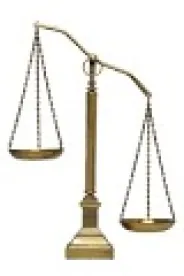In Petrella v. Metro-Goldwyn-Mayer, Inc., 572 U.S. __ (2014), the United States Supreme Court addressed the role that the equitable defense of laches – i.e., a plaintiff’s unreasonable and prejudicial delay in commencing suit – plays in relation to a claim of copyright infringement filed within the Copyright Act’s three-year statute of limitations period. There is no doubt that Petrella puts to rest a split amongst the Circuits by clarifying that laches cannot bar a claim for legal relief for infringement occurring within the three-year statutory window. Yet, Petrella should not be seen as a knock-out punch to the use of laches in copyright actions. To the contrary, Petrella re-emphasizes the important role that laches plays in connection with the equitable remedies available under the Copyright Act, and provides copyright defendants – and plaintiffs – with guidance as to whether, and to what extent, a plaintiff’s delay in filing suit may limit the availability of those equitable remedies. Additionally, Petrella’sdiscussion of a copyright plaintiff’s evidentiary burden and comments about the Copyright Act’s registration requirements raise interesting questions about the impact that a delay in filing suit may have on a plaintiff’s ability to prove infringement. Laches, it seems, “don’t go down for nobody.”[1]
Petrella involved a claim of copyright infringement brought against Metro-Goldwyn-Mayer, Inc. and certain related entities (collectively, “MGM”) by the daughter of Frank Petrella, who authored two screenplays (a “1963 Screenplay” and “1973 Screenplay,” respectively) and a book based on the life of boxing champion Jake LaMotta. Id. at 7-8. In 1976, Frank Petrella and Lamotta assigned their rights in the three works, including the renewal rights, to Chartoff-Winkler Productions, Inc. Id. at 7. The motion picture rights to the three copyrighted works were subsequently acquired by United Artists Corporation, a subsidiary of MGM. Id. In 1980, MGM released, and registered a copyright in, the motion picture Raging Bull, directed by Martin Scorcese and starring Robert DeNiro. Id. Frank Petrella died in 1981 – during the initial terms of the three copyrighted works. Id.
In 1990, the United States Supreme Court issued its decision in Stewart v. Abend, 495 U.S. 207 (1990). In Stewart, the Supreme Court confirmed that the assignment of renewal rights by an author before the time for renewal arrives cannot defeat the right of the author’s statutory successors to the renewal rights if the author dies before the right to renewal accrues. Id. at 219-20. In other words, if the author dies before the right to renewal accrues, then the author’s statutory successor is entitled to renew the copyright free and clear from any assignment previously made by the author. Id. In such a case, the owner of a derivative work does not retain the right to exploit that work when the death of the author causes the renewal rights in the preexisting work to revert to the statutory successors. Id. at 220-21.
In 1991, following the Supreme Court’s decision in Stewart, Frank Petrella’s daughter and statutory successor renewed the copyright in the 1963 Screenplay, thereby recapturing the copyright for the renewal term unburdened by her father’s previous assignment. Id. at 8. Petrella, however, took no immediate action against MGM to enforce her copyright in the 1963 Screenplay. In 1998, seven years after Petrella reacquired the copyright in the 1963 Screenplay, her attorney notified MGM that Petrella had obtained the copyright and that MGM’s continued exploitation of any derivative work – including the motion picture Raging Bull – allegedly infringed on Petrella’s copyright. Id. However, once again, Petrella chose to not take any immediate action against MGM because, as she put it, “the film was deeply in debt and in the red and would probably never recoup.” Id. at 16.
Thereafter, in 2009 – eighteen years after Petrella recaptured the copyright in the 1963 Screenplay – Petrella filed a copyright infringement action against MGM, alleging that MGM infringed her copyright in the 1963 Screenplay by using, producing and distributing the motion picture Raging Bull, which Petrella alleged to be a derivative of the 1963 Screenplay. Id. at 8. Petrella sought monetary damages and injunctive relief for MGM’s acts of alleged infringement occurring within the three-year statute of limitations period prior to the filing of her lawsuit. Id. at 8-9.
MGM moved for summary judgment on various grounds, including the equitable doctrine of laches. As to its laches-based defense, MGM argued that Petrella’s eighteen-year delay in filing suit after she reacquired the copyright in the 1963 Screenplay was unreasonable and prejudicial to MGM. The United States District Court for the Central District of California granted summary judgment on MGM’s laches defense, concluding that the doctrine of laches barred Petrella’s complaint, in its entirety. Id. at 9. The Ninth Circuit Court of Appeals affirmed the District Court’s laches-based dismissal, agreeing with the District Court that MGM had established expectations-based prejudice, in that it made a large investment in marketing, advertising, distributing and otherwise promoting the film, including a 25th Anniversary Edition of Raging Bull that was released in 2005, believing that it had complete ownership and control of the film. Id.
The United States Supreme Court granted certiorari to resolve a conflict among the Circuits on the applicability of the laches defense to claims of copyright infringement brought within the three-year statute of limitations set forth in 17 U.S.C. § 507(b). Id. at 10. Examining the Copyright Act, the Court found that the three year statute of limitations applicable to copyright claims “itself takes account of delay” because, under § 507(b) and the Copyright Act’s separate-accrual rule, a “successful plaintiff can gain retrospective relief only three years back from the time of suit.” Id. at 11. The Supreme Court concluded that courts are not at liberty to “jettison Congress’ judgment on the timeliness of suit” and, therefore, laches “cannot be invoked to preclude adjudication of a claim for damages brought within the three-year window.” Id. at 1.
Although Petrella clearly establishes that laches cannot be invoked to knock-out a claim for legal relief for infringement that occurs within the Copyright Act’s three-year statute of limitations period, it does not stop there. Rather, the Supreme Court goes on to re-emphasize that a plaintiff’s unreasonable and prejudicial delay in commencing suit – the cornerstone of a laches-based defense – still packs a considerable punch in determining the types, and contours, of equitable relief appropriately awardable under the Copyright Act. Of course, the availability of equitable relief is of particular significance to the parties in an infringement action, as two of the Copyright Act’s more potent remedies – injunctive relief and an accounting of the defendant’s profits – are inherently equitable remedies.
Petrella acknowledges the importance of laches in evaluating claims for equitable relief at both: (1) the outset of the litigation; and (2) the remedial stage when determining the proper relief and assessing an award of profits. The Supreme Court confirmed that, in “extraordinary circumstances,” the consequences of the plaintiff’s delay in commencing suit may – as a threshold matter – limit the particular type of relief equitably awardable by the Court. Id. at 20. The Court cited Chirco v. Crosswinds Communities, Inc., 474 F. 3d 227 (6th Cir. 2007), as an example of a case where such “extraordinary circumstances” were found to be present. In Chirco, the plaintiff-copyright owner knew that the defendants’ housing development infringed its copyrighted architectural designs prior to the defendant starting construction on the development, but took no steps to halt the development for two-and-one-half years, during which more than 168 of the units were built, 140 units sold, and 109 occupied by residents. Id. at 234-36. Although the Sixth Circuit Court of Appeals reversed the District Court’s dismissal of the plaintiff’s entire lawsuit based on laches, it affirmed the District Court’s judgment to the extent that it barred the plaintiff from obtaining an injunction mandating the destruction of the housing project. Id. at 236. The Sixth Circuit found that such relief would be inequitable given that: (1) the defendants knew about the development plans before construction began; and (2) the requested relief would work an unjust hardship on the defendants and innocent parties. Id. Thus, the plaintiff’s unreasonable and prejudicial delay deprived the plaintiff of an equitable remedy otherwise available under the Copyright Act.
Similarly, in New Era Publications International v. Henry Hold & Co., 873 F. 2d 576, 577 (2nd Cir. 1989), the licensee of the copyrights to certain works by Church of Scientology founder, L. Ron Hubbard, brought an infringement action against the publisher of a Hubbard biography, alleging that the biography contained extensive reproductions of Hubbard’s published and unpublished writings. On appeal, the Second Circuit affirmed the District Court’s refusal to permanently enjoin publication of the biography based on the doctrine of laches. Id. at 584. The Second Circuit noted that the defendant had been aware that the biography would be published in the United States since 1986, but, despite filing lawsuits in 1987 to enjoin publication of the biography abroad, failed to compare the defendant’s biography with the books published abroad, failed to inquire of the defendant as to the planned date of publication in the United States, and failed to take any steps to enjoin publication of the book until it sought a restraining order in 1988. Id. Moreover, by the time that the plaintiff took action in 1988, twelve-thousand copies of the book had already been printed, packed and shipped, review copies had been sent out, and a second printing had already been scheduled. Id. The Second Circuit found that, had the plaintiff promptly sought an adjudication of its rights, the book might have been changed at minimal cost while there was still an opportunity to do so, but that a “permanent injunction would result in the total destruction of the work since it is not economically feasible to reprint the book after deletion of the infringing material.” Id. The court concluded that “[s]uch severe prejudice, coupled with the unconscionable delay already described, mandates denial of an injunction for laches and relegation of [the plaintiff] to its damages remedy.” Id. at 585.
In addition to limiting at the outset the type of equitable relief available to a plaintiff, Petrella acknowledged that “a plaintiff’s delay can always be brought to bear at the remedial stage, in determining appropriate injunctive relief, and in assessing the ‘profits of the infringer…attributable to the infringement.’” Id. at 21. The Petrella Court instructed that, “[s]hould Petrella ultimately prevail on the merits, the District Court, in determining appropriate injunctive relief and assessing profits, may take account of her delay in commencing suit” Id. In considering Petrella’s delay, the Court directed the District Court to “closely examine MGM’s reliance on Petrella’s delay” and consider factors such as: (1) the defendant’s knowledge of the plaintiff’s claims; (2) the protection that the defendant may have achieved through pursuit of a declaratory judgment action; (3) the extent to which the defendant’s investment was protected by the separate-accrual rule; (4) the court’s authority to order injunctive relief “on such terms as it may deem reasonable” under Section 502(a); and (5) any other considerations that would justify adjusting injunctive relief or profits. Id. at 21-22.
Apart from confirming the significant role that laches plays in determining the equitable relief available to a plaintiff in a copyright action, Petrella hints at potential evidentiary roadblocks that a copyright plaintiff may encounter as a result of the delay associated with a laches-based defense. Noting that a copyright plaintiff bears the burden of proof, the Petrella Court concluded that any loss of evidence that may result from a plaintiff’s delay in filing suit would likely impact the plaintiff’s ability to establish infringement. Id. at 18. The Court further opined that the Copyright Act’s “registration mechanism” reduces the need for extrinsic evidence because, in order for a plaintiff to be able to sue for infringement, both the registration certificate and deposit copy of the original work must be “on file” with the Copyright Office. Id. Thus, Petrella seems to implicitly endorse the view that a registration certificate – and not merely a pending application – is required to maintain a copyright action, an issue that is currently the subject of a split amongst the Circuits. Additionally, the importance that Petrella places on a plaintiff’s deposit of a copy of the original work raises an interesting question; namely, what happens when the plaintiff’s delay in filing suit is such that the Copyright Office no longer has a copy of the original work in its archives?[2] In such a case, the best evidence rule may very well preclude a plaintiff from prevailing on a copyright claim if the plaintiff cannot supply a copy of the original work. See, e.g., Seiler v. Lucasfilm, Ltd., 808 F.2d 1316 (9th Cir. 1987). This could present an insurmountable hurdle in suits brought by statutory heirs alleging the infringement of unpublished works.
In short, while Petrella clearly limits the role that the equitable defense of laches has vis-à-vis claims for legal relief for copyright infringement occurring within the Copyright Act’s three-year statute of limitations period, it by no means absolves a plaintiff from the consequences of unreasonable delay. To the contrary, an unreasonable and prejudicial delay in commencing suit can hit a plaintiff where it matters most – the ability to enjoin infringing conduct, deprive a defendant of profits attributable to its alleged infringement and, indeed, meet its burden of proving infringement. Thus, laches is still a contender that should be considered when evaluating a claim of copyright infringement.
[1]Quote attributed to Jake LaMotta character portrayed by Robert DeNiro in “Raging Bull”.
[2] Under the Copyright Office’s retention policies, deposits may be transferred to the Library of Congress, given away to other institutions or discarded, the latter generally after five years. See, Notice of Policy Decision – Policy Statement on Deposit Retention Schedule, 48 Fed. Reg. 12862, March 28, 1983. Full term retention requires a government filing fee of $540 in addition to the normal copyright application fee. See, current fee schedule at www.copyright.gov/docs/fees.html.




 />i
/>i

